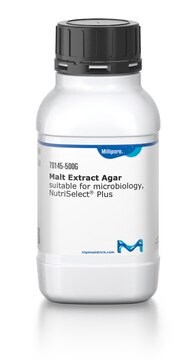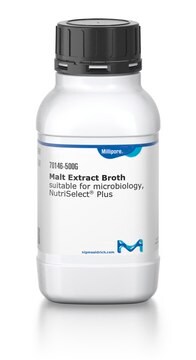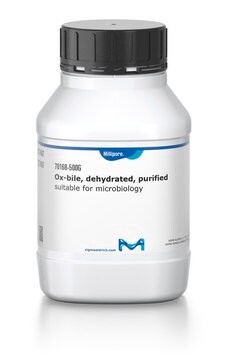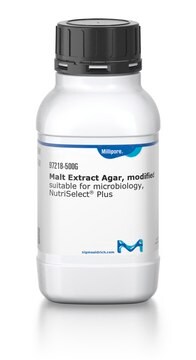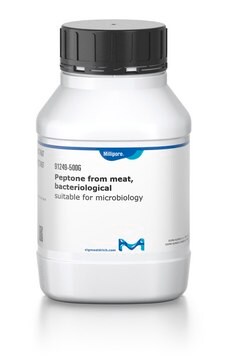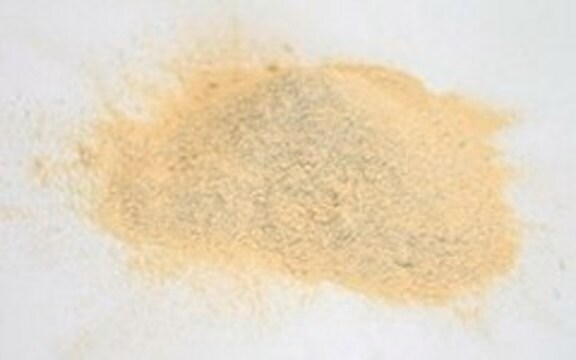70167
Malt extract
suitable for microbiology, Purified and clarified malt extract, supplemented with growth factors
Sign Into View Organizational & Contract Pricing
All Photos(2)
About This Item
Recommended Products
biological source
corn
Quality Level
sterility
non-sterile
form
powder
shelf life
limited shelf life, expiry date on the label
composition
chlorides, ~2%
reducing sugars (as maltose), ≥60%
ign. residue
~3%
loss
~6% loss on drying
pH
5-6 (3% in H2O)
solubility
H2O: 3%, faintly turbid, yellow
application(s)
microbiology
Looking for similar products? Visit Product Comparison Guide
Related Categories
General description
Malt extract powder is prepared from an aqueous extract of sprouted malt grains and dried at low temperatures to preserve nutrients. This malt extract is a purified and clarified malt extract, supplemented with growth factors. It is easily soluble in water. It contains a mix of carbohydrates (mainly maltose) and growth factors. It is ideally suitable for use in media employed for cultivation of fungi.
Application
Malt extract powder is added to specific culture media to enhance the nutrient quality of the media. It is most suited to enhance the growth and cultivation of fungi, yeasts, and molds
Storage Class Code
11 - Combustible Solids
WGK
WGK 3
Flash Point(F)
Not applicable
Flash Point(C)
Not applicable
Personal Protective Equipment
dust mask type N95 (US), Eyeshields, Gloves
Choose from one of the most recent versions:
Already Own This Product?
Find documentation for the products that you have recently purchased in the Document Library.
Customers Also Viewed
Losee L Ling et al.
Nature, 517(7535), 455-459 (2015-01-07)
Antibiotic resistance is spreading faster than the introduction of new compounds into clinical practice, causing a public health crisis. Most antibiotics were produced by screening soil microorganisms, but this limited resource of cultivable bacteria was overmined by the 1960s. Synthetic
Our team of scientists has experience in all areas of research including Life Science, Material Science, Chemical Synthesis, Chromatography, Analytical and many others.
Contact Technical Service
